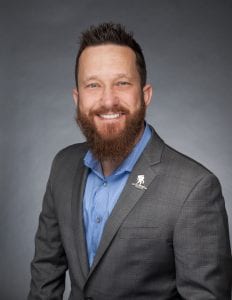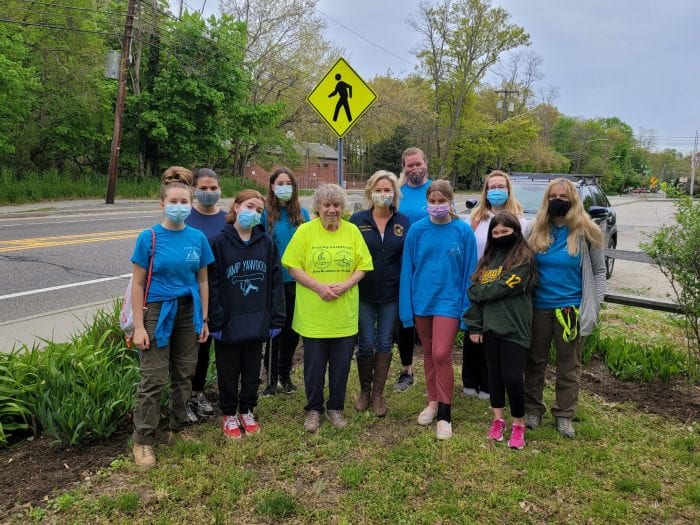This past week, baseball played a huge role in brining the two communities of Mount Sinai and Rocky Point together for a dynamic cause.
“Home Runs for Easton” was organized between these two baseball teams that played in front of almost 1,000 people at the Town of Brookhaven Diamond in the Pines Park.
The players had a home run derby and a scrimmage in front of fans that also enjoyed a massive raffle, food, refreshments, hat and shirt sales, and plenty of smiles towards a worthy endeavor.
Long-time Mount Sinai baseball coach Eric Reichenback was proud of the unyielding efforts that were presented to make this fundraiser into a successful function. He wanted to thank his school’s football coach Vinny Amarato, the girl’s basketball coach Mike Popperlotto, Joanne Rentz, and especially his wife for spending so much time to help the family of his middle school baseball coach Dave Clark.
Easton was treated for this serious spinal cord condition at Stony Brook University Medical Center and at Shriners Hospital for Children.
Reichenback is no stranger to playing and coaching big games at almost every baseball level, but perhaps this one of the finest moments of his career. He was extremely pleased to help bring some comfort to one of his coaches in one what Reichenback called a “colossal effort” to bring this game together.
Easton’s dad is a physical education teacher and coach at Mount Sinai High School, and he was a talented baseball player that was a catcher at Sachem High School. He later played at New York Tech.
With family members, friends, baseball players, teachers and parents from both districts, they watched a homerun derby that gained applause from the fans, where they saw Rocky Point Coach Eric Strovink, need only one pitch to hit the ball over the fence at the Diamond at the Pines baseball field.
Owner of the All-Pro Sports Academy and instructor Scott June tossed batting practice for over 40 players from both teams that tried to take him deep on every swing. He is a good friend and former Sachem teammate of Easton, who delivered many pitches to the young men that dug in at home plate.
This event that was run by these two teams raised over $25,000, to help this family endure the long and costly road to recovery.
Rocky Point Assistant Baseball Coach Eric Strovink was elated at the positive response that was demonstrated by fans that traveled from near and far to watch these local boys play for Easton.
This local baseball hitting figure that once tormented high school and college pitchers, is a “gentle giant” that has helped steer the Rocky Point baseball team towards helping others through numerous visits to a local soup kitchen and homeless shelter.
One of the numerous people that Strovink identified in helping this event was Eric Fritch. He is a volunteer at Shriners Hospital, where he has donated money and support in helping families cope with severe medical hardships. This was no different, as Fritch was a dominant volunteer to help Easton on this day.
There was no shortage of help, as many members stepped up to the plate to help run this fundraiser.
Anthony and Eleni Sorice represented one of the many families that gave their time to help make this event possible and they believed that it was a “total team effort between these two towns to bring this event alive.”
There were gift cards of every kind that were donated by local restaurants, bars, and Tuscany Market from Miller Place. And those that donated money through the massive raffle were able to win sports memorabilia items that were signed by former New York Yankee Greg Nettles, New York Met Todd Zeile, current Yankee Clint Frazier and items from Nascar.
Rocky Point Senior Nash Thixton, a pitcher, hit one home run in the derby, where he also won a signed jersey of New York Yankee Pitcher Luis Severino. Thixton was pleased to participate in this game and he believed that it was “good for both communities to supremely come together to aid a family in need.”
Over the last several years, these two teams have gained notable experience in working together towards charitable causes to support these North Shore communities.
They have scrimmaged against each other during the “Live Like Susie” event.
This baseball tradition remembers the tragic loss of Susie Facini, a graduate of Rocky Point High School, who passed away from a sudden heart attack in 2011.
The Eagles and Mustang baseball teams established their own “spring classic” to recall the efforts of this kind young lady who positively touched everyone within her school district.
Whereas both teams always want to do well against each other within the lines of this game, they have exhibited a unique sense of class to bring awareness to local causes that have brought our residents together through the spirit of baseball.
One of the most important aspects, is the experience of goodwill that these young men have learned from their coaches that have partook within this local tradition.
Most importantly, these players someday pass this baseball compassion onto teams that they will coach and to their own children in helping others through athletics.
This tradition of giving back was established by former Rocky Point High School coach Andrew Aschettino to his successor Anthony Anzalone, and the mighty presence of Strovink, and Reickenbac. They have utilized our National Pastime to foster the importance of giving back through major fundraisers like that of “Home Runs for Easton.”
Anzalone was pleased to be a part of this event and he stated, “It was an honor to be a part of such an amazing day.
We have a long standing relationship with the coaching staff at Mount Sinai and when asked to join forces, it was a no brainer.”
Although it is never easy to see a child go through a difficult health condition, the warmth of baseball helped brighten a poor situation for this family.
Again and again, baseball has proven through every type of crisis, to be a pleasant distraction from negative times, to bring our people together, as was demonstrated at the Diamond in the Pines on Thursday, May, 6.
Rich Acritelli is a social studies teacher at Rocky Point High School and an adjunct professor of American history at Suffolk County Community College.



































 Julie Nicholson, 29, was last seen at John T. Mather Memorial Hospital, located at 75 North Country Road in Port Jefferson., on May 8 at approximately 7:30 a.m. She was reported missing at approximately 12:40 p.m.
Julie Nicholson, 29, was last seen at John T. Mather Memorial Hospital, located at 75 North Country Road in Port Jefferson., on May 8 at approximately 7:30 a.m. She was reported missing at approximately 12:40 p.m.


